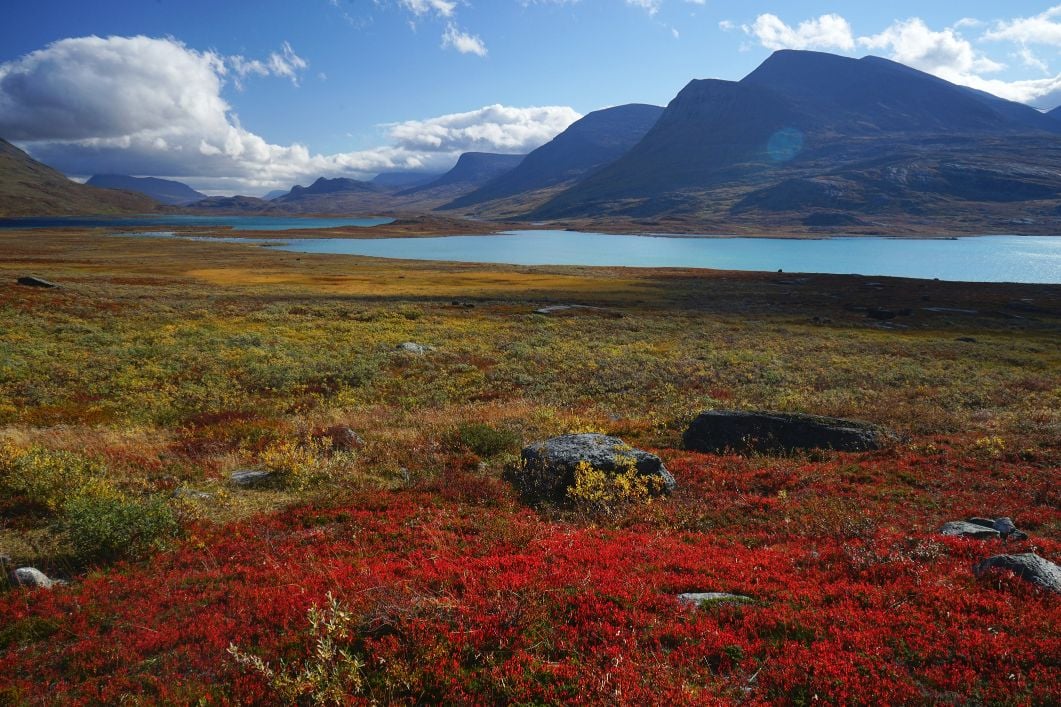
The best hiking in Sweden makes use of the wild greenery, beautiful lakes and idyllic natural diversity across the country. Sweden is a country with an outdoor culture and a real love for nature. This means the hiking infrastructure in Sweden is very good, too. Hundreds of established hiking trails exist in Sweden, and they are generally well signposted or well marked. This is far from an essential for a good hike of course, but it’s always welcome. Especially if your sense of direction is poor to the point of ridiculous.
The trails are also often serviced by mountain huts, hostels, hotels or campsites. Wild camping is legal in Sweden as part of the wonderful Swedish Allemansrätten (Everyman’s Right), which also means you can hike wherever you want as long you don’t disturb local residents and leave things as you found them. So even if you don’t come to some cushty accommodation while hiking in Sweden, you can always pop up a tent of your own.
These wild camping rules do differ in some national parks and nature reserves in the country though (occasionally bivouacking is legal where camping is not), so it’s always best to check the specifics of where you’re going.
It’s important to note that these route descriptions are only short summaries, designed to inspire but not to serve any navigational purpose. They are not intended to guide you on the route and further mapping and planning (or a local guide!) will be required if you want to safely walk any of the trails featured.

So, in such a large, long country – Sweden is 1600km from north to south – where do you start? There is, of course, great hiking in Sweden no matter what part of the country you search. With the list below, we’ve just aimed to provide five trail suggestions that cover different parts of the country, and which show off how diverse hiking in Sweden can really be.
1. Hike Abisko-Nikkaluokta on the Kungsleden (The King’s Trail)
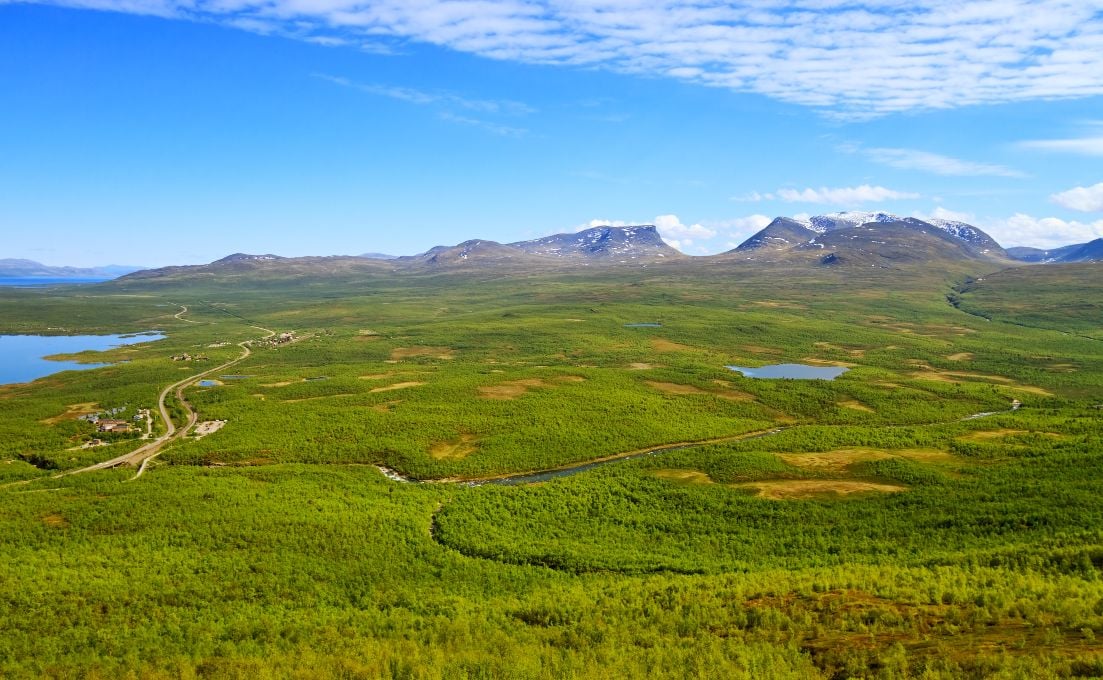
The King’s Trail is one of the most obvious places to start when talking about hiking in Sweden. The trail runs for over 400km between Abisko and Hemavan in Swedish Lapland, in the north of the country. Take on the trail in summer and you’ll be hiking with the midnight sun. Visit the trail in winter and you have a good chance of seeing the northern lights – though naturally, it’s a lot harder to cover real ground on The King’s Trail (bearing in mind it’s in the Arctic Circle) during the winter months, and you certainly need to be prepared for the cold.
Visit the King’s Trail any time of year and you’ll pass through an array of mountains, beautiful streams and three national parks – Abisko (above), Stora Sjöfallet and Pieljekaise. The trail varies in accommodation options. There is a well-developed cabin network between Abisko and Kvikkjokk. Between the areas of Kvikkjokk and Ammarnäs you’ll find less cabins.
The great thing about the King’s Trail is that the segments break down nicely, so if you don’t have time for the full distance, you can choose a section to hike. One of the most scenic is the Abisko-Nikkaluokta stint on the King’s Trail. It’s around 105km and is usually hiked in 5-7 days. It passes five cabins on the King’s Trail and is full of beautiful Lapland scenery. You’ll start and end in birch forest, with mountain landscapes making up most of the in between. The high point is the Tjäktja Pass, 1150m above sea level. Expect to see some snow even in summer.
If you need further convincing about hiking in Sweden, above is a documentary about a full adventure on the King’s Trail from 2015! One to get your wanderlust stoked!
2. Climb Kebnekaise (2,106m)
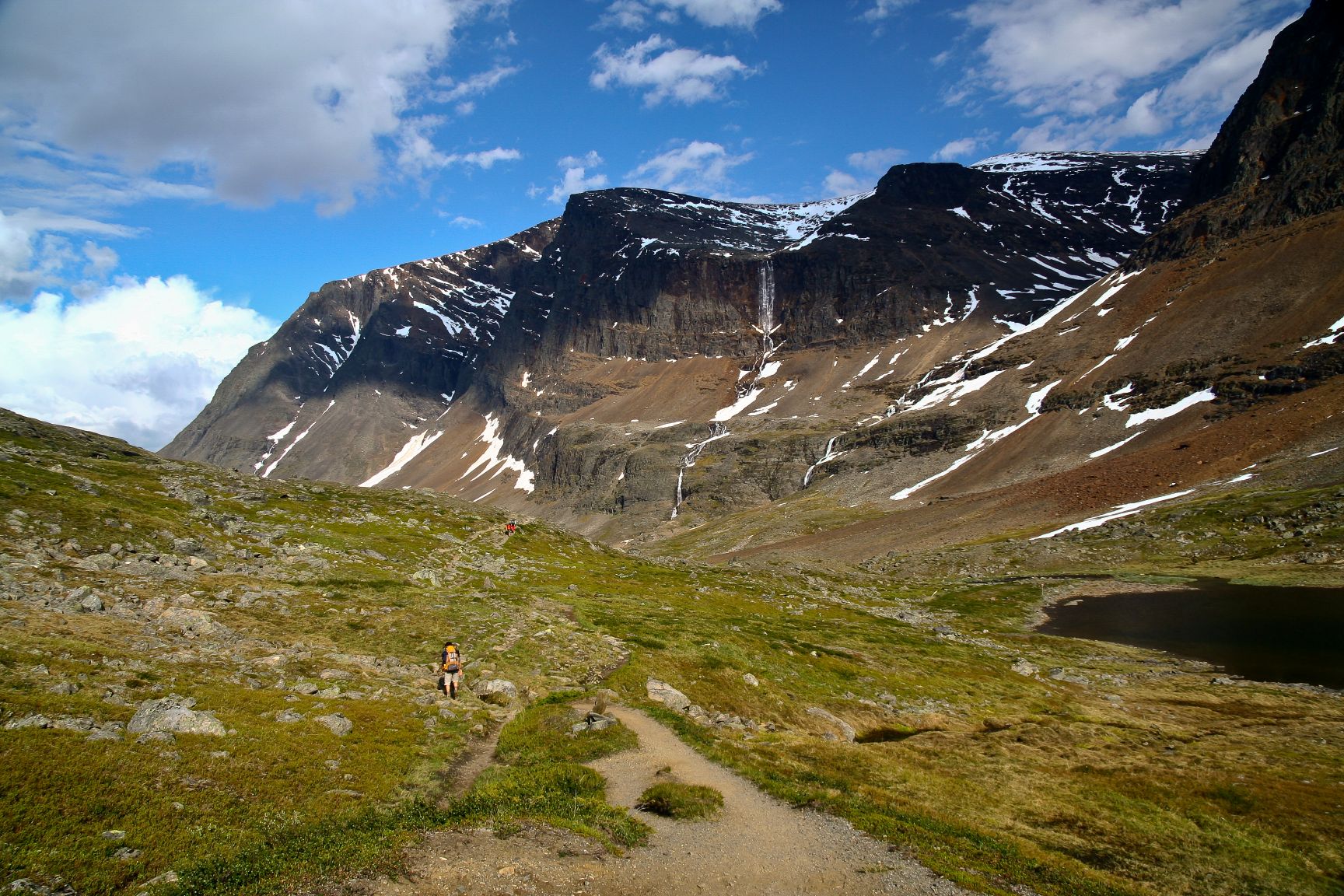
There’s something about going up big mountains, isn’t there? Kebnekaise is the the tallest mountain in Sweden at 2106m, and it’s one of the best hikes in the country as well.
To climb the mountain, you first of all need to get yourself to the Kebnekaise Fjällstation/mountain station, which is the starting point for the climb up the mountain. The mountain station is 19km from the nearest town Nikkaluokta, and there’s no road, so be sure to consider this when you’re planning your hike. A ferry does cut down on that 19km during the summer, but even so, this makes it a multi-day outing.
There are two main routes up the highest mountain in Sweden. The Vastra (west route) is the easier. It’s a straight-up hike. The Østra (east route) is a much tougher climb. It’s also, if you’re up to it, a bit more exciting. There’s a scramble, and even a via ferrata up there and a glacier to cross. You need a guide for this route for sure. You also need a good bit of time to climb both routes. It’s a full day out to get up and down no matter if on Vastra or Østra.
The final two stages of the King’s Trail / Kungsleden also finish at or start from the Kebnekaise mountain station – so you can link the Abisko-Nikkaluokta and the Kebnekaise climb if you want to really go hard in Sweden!
3. Hiking in the Fulufjället National Park
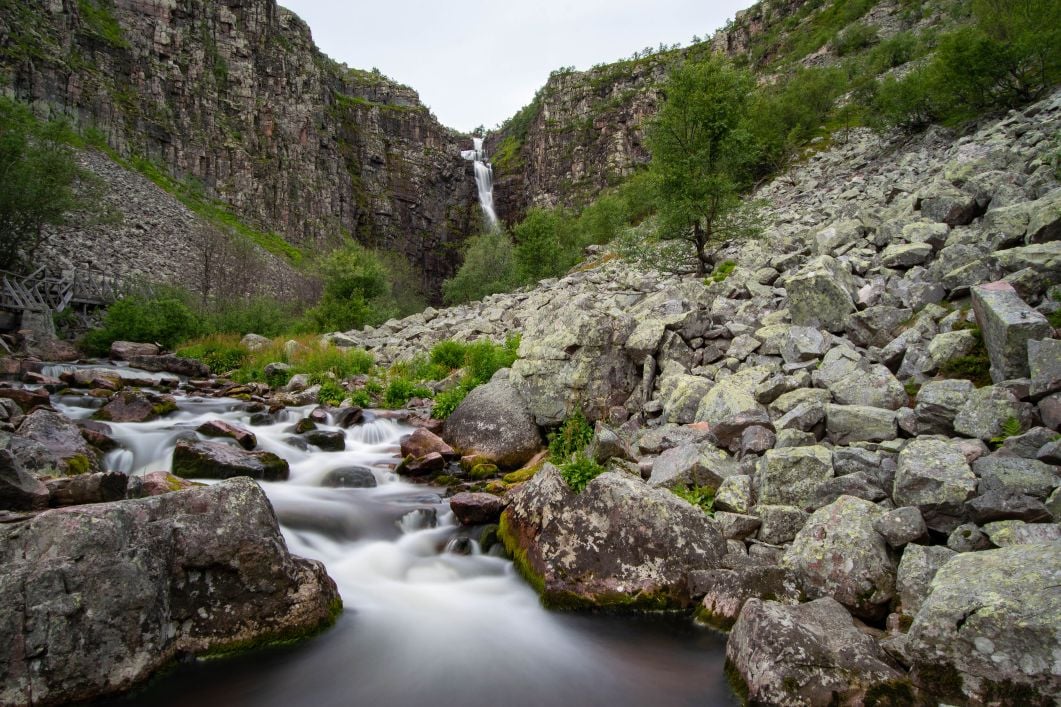
Fulufjället National Park is located in the north west of Sweden around the eponymous mountain of Fulufjället (1,044m). The National Park authorities in Sweden describe it as a “virtually untouched nature area” and it’s home to the remarkable Njupeskär waterfall, which reaches 93m in total and has a free fall of 70m, making it one of the highest waterfalls in Sweden. There’s a lot of bare mountain heights and heath, and the park is home to everything from elk to bears, wolverines, wolves, lynx, pine martens and the world’s largest falcon, the Gyr Falcon, can also be found here. You can also fish Arctic char, Salmon trout and more.
The trail system in Fulufjället National Park is incredibly well-developed, with 140km of marked trails. There are also cabins for overnight stays in the park. Numerous loops, including the culture 12km Poststigen route and 22.5km Tangsjöleden trail make the Fulufjället National Park a great place to come and explore. Arguably though, the place really comes into its own in winter – though you’ll need a pair of snowshoes or cross-country skis to explore the terrain.
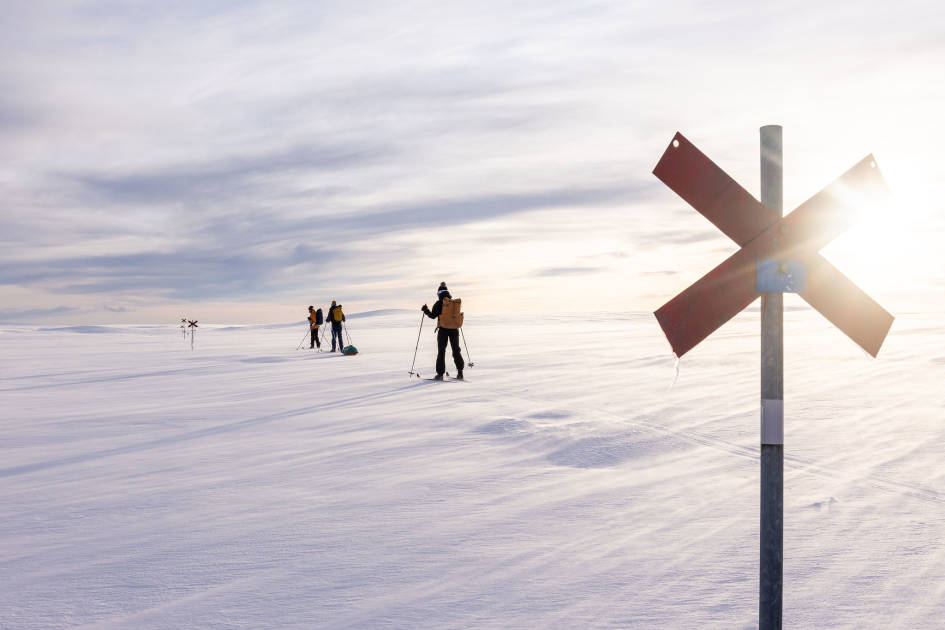
4. Walk the Sörmlandsleden Trail
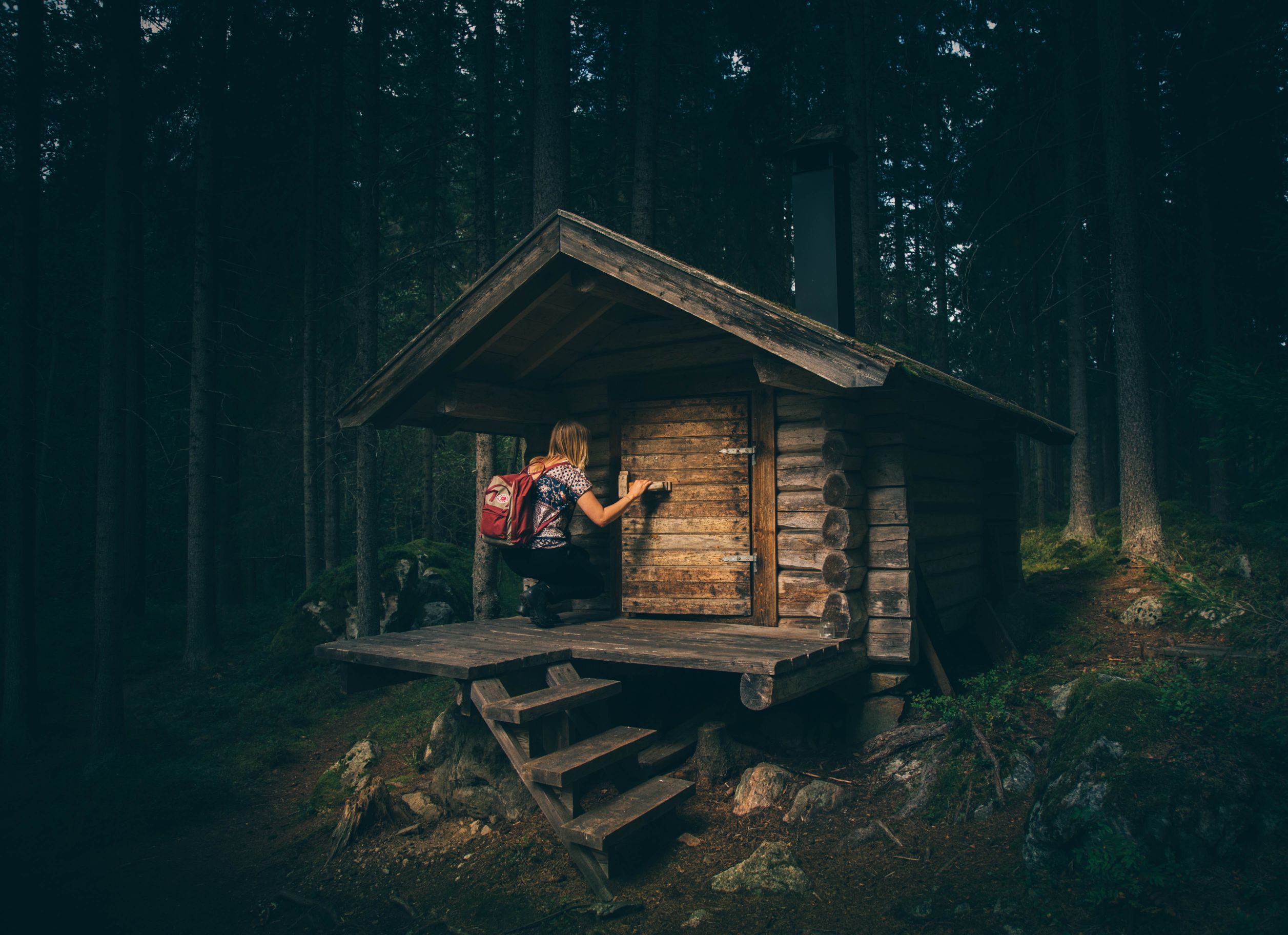
The Sörmland trail runs for 1000km, with a “main trail” of 627km winding through the county of Sörmland. It includes as diverse a landscape as you’d expect from that distance. Think open landscapes, proper wilderness, lakes and beautiful coastline. Thankfully, it’s also been chopped up into an enormous 92 segments to make the whole trail a lot more accessible in bits.
There are various sections of the trail that you can do as day hikes from Stockholm, but perhaps one of the most beautiful routes on the Sörmlandsleden Trail is the Wilderness trail from Läggesta. Walking on rugged hills, you’ll pass old mining settlements, pine forests, bogs and moors and several lakes ideal for wild swimming. Extra details on the official site.
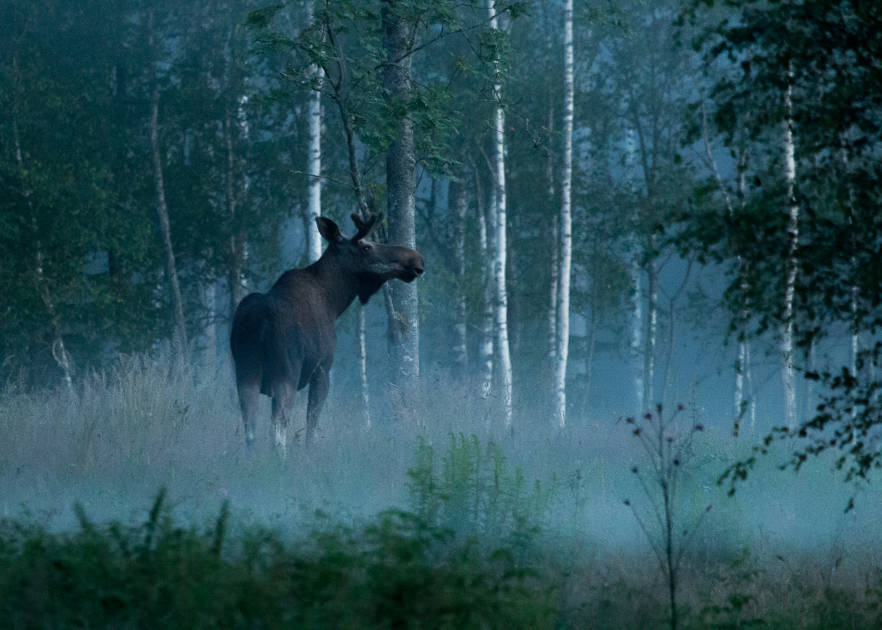
There are beds available on the trail, but much of the beauty of it is in camping along the way, or staying at a shelter – a free log cabin complete with a prepared fireplace nearby. These can’t be booked and are designed for four people. Think of it a little like the bothies of Scotland. All you need is some firewood and your own sleeping bag to keep you warm.
5. Sample the Skåneleden Trail, Skåne
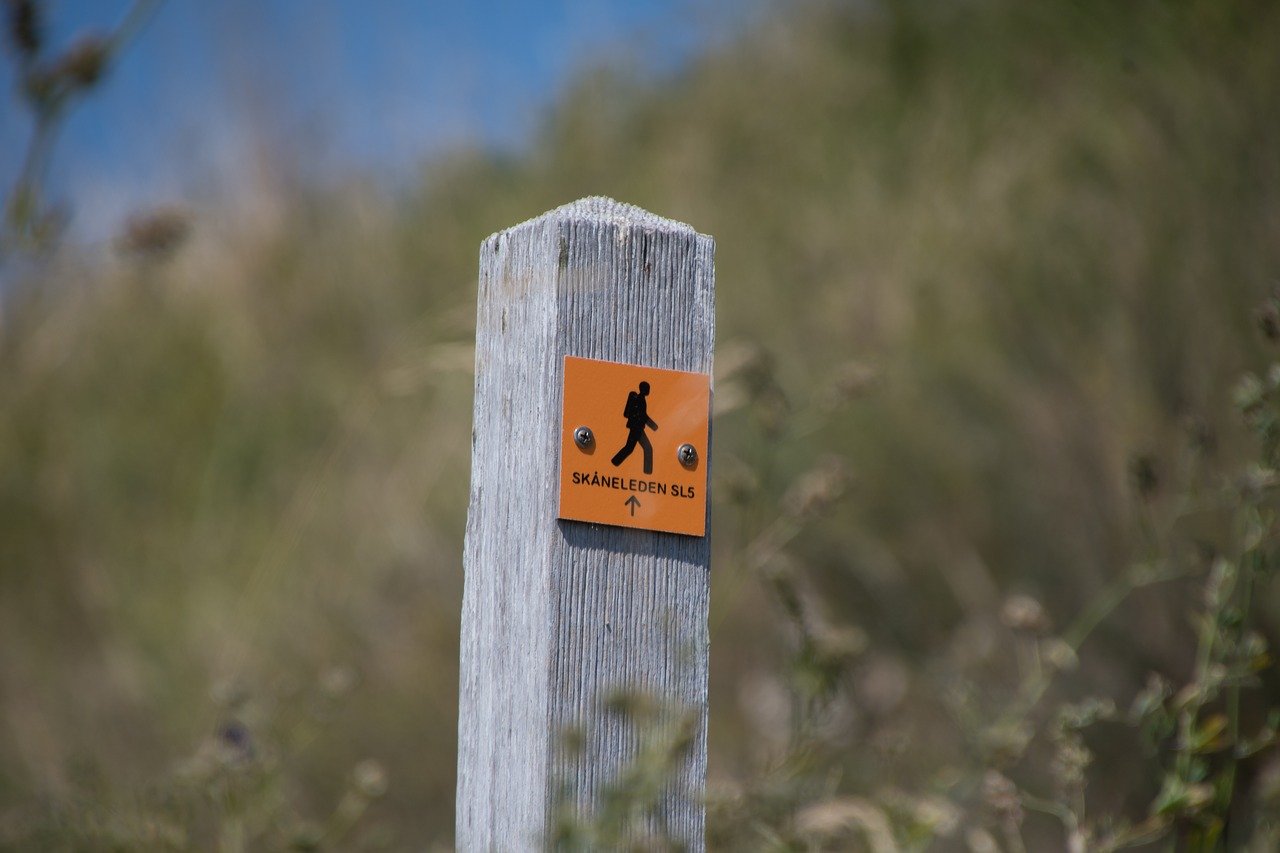
The Skåneleden Trail is a 1,300km route through southern Sweden, which is divided into six sub-trails. The trail passes rocky coastlines, beautiful forests and stunning lakes.
Section one of the trail is a coast to coast, leaving from Solvesborg and reaching to Angelholm, and mixes coastal cliffs with woodland lakes. Sub-trail two travels through the centre of the region, and samples savannah-like environments and country estates. Segment three has some truly magnificent ravines and national parks, and at 162km can make for a great multi-hike.
The other three segments sample equally as diverse terrain, and each of the sub-trails is broken down into smaller segments for easier one-day hiking. The official website is a great resource.
When is the Best Time to Go Hiking in Sweden?
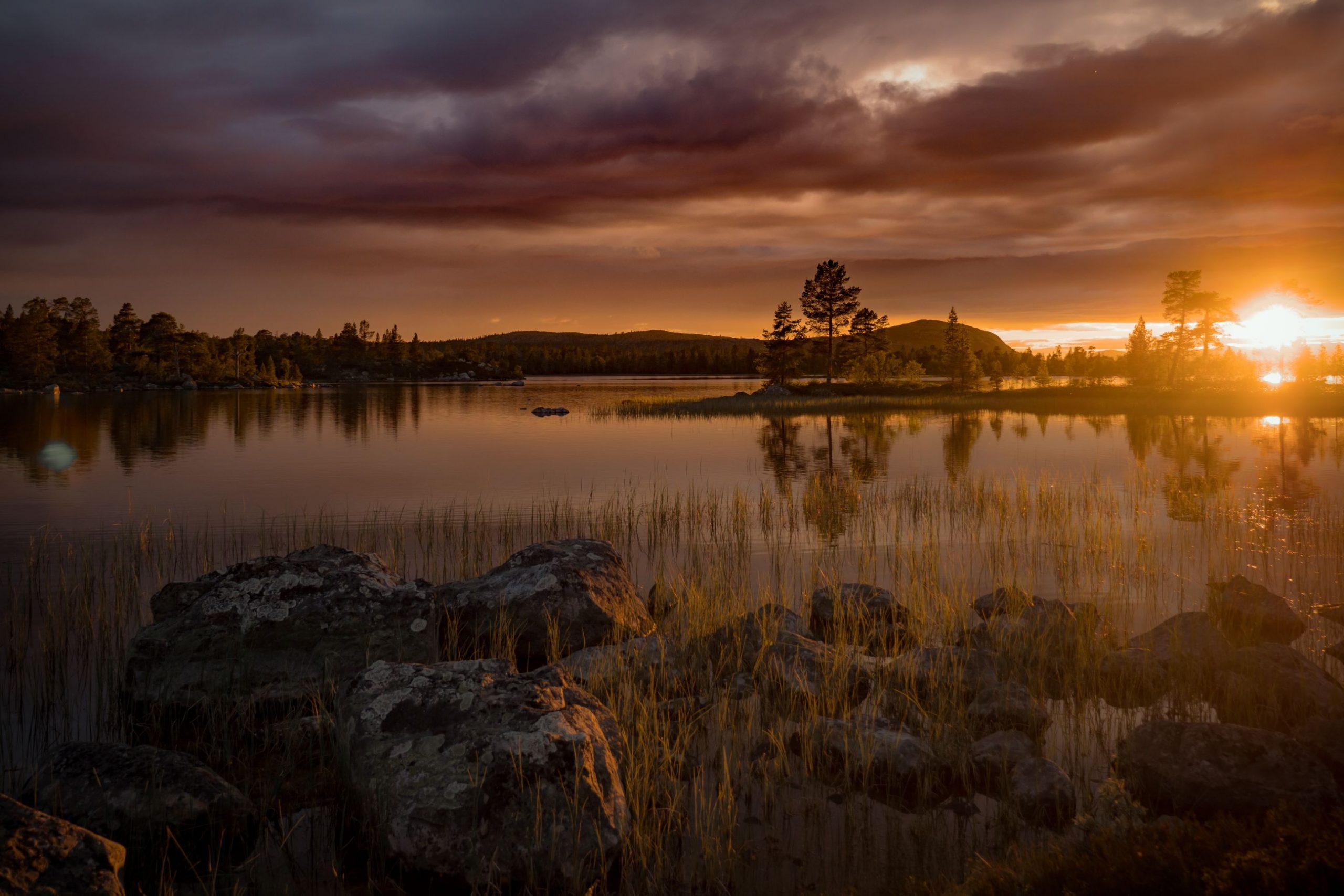
How big is your coat and how much do you like darkness? As we alluded to in our first paragraph, Sweden is a country of true seasons. It’s also a large country though, and particularly given how elongated it is, and the fact that part of it is inside the Arctic Circle, those seasons will be very different depending on where you go.
In general though, visit in the summer and you’ll get lush greens and long days. You’ll also be able to follow the signposts and marked trails easier, as they won’t be covered in snow. For obvious reasons, more daylight, visibility and better camping conditions make the summer (June-Aug) the best time to go hiking in Sweden.
That said, the winter time is mighty beautiful too. It’s just a different experience and requires a lot of different gear. Visit in the winter and you’ll get very little light at all. If you go far enough north, you’ll experience the polar night and see no sunshine at all – though in return, you have a chance to catch a glimpse of the northern lights.
The Autumn and Spring of course will have beautiful colours, and are likely to have less tourists than the summer, so the best time to go hiking in Sweden really is a subjective decision, based on what sort of landscape and climate you’d like and what area you’re visiting.
Check out our full range of adventure holidays in Sweden


